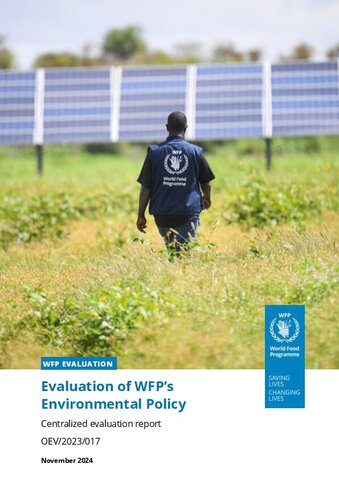
The evaluation of WFP’s 2017 environmental policy assessed the quality and results of the policy and the factors that enabled or hindered achievement of results. It covered the period from 2017 to mid-2024.
The evaluation concluded that:
- The Policy provides a solid foundation for improving environmental sustainability and that there has been progress towards the environmental policy’s five objectives. However, the broader vision and objectives of the policy have been overshadowed by a focus on specific tools, including the safeguards and environmental management system adopted in WFP’s 2021 environmental and social sustainability framework. This has skewed focus and efforts towards these tools and away from key areas of environmental impact such as supply chains.
- The policy is focused on environmental sustainability rather than covering both environmental and social sustainability. Although the environmental and social sustainability framework establishes standards for both, these standards are not effectively reflected in policy implementation. Commitment to environmental and social sustainability is still largely at a conceptual rather than programmatic level, with missed opportunities to maximize environmental benefits and mitigate risks to people in vulnerable situations.
- The tools, such as safeguards and environmental management system, are generally aligned with international standards and donor requirements.
- WFP’s approach to environmental management system is yielding early positive results in the environmentally sound management of WFP facilities in areas such as energy efficiency and waste reuse and recycling.
- It is too early to assess the results or influence of the safeguards on the environmental and social sustainability. Thus far safeguards have been largely applied to development‑focused work and are not yet consistently implemented.
- The tangible benefits of these tools have been a key factor enabling results as applying safeguards can unlock new funding streams and application of environmental management system can reduce costs. However, implementation has been hindered by a lack of resources, accountability mechanisms and high-level leadership, staff expertise, and monitoring.



